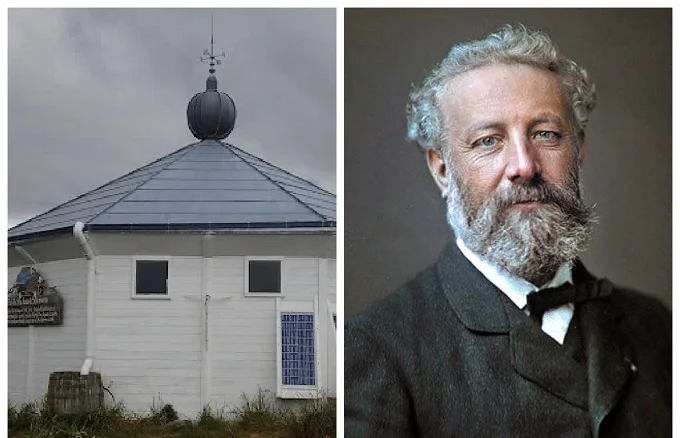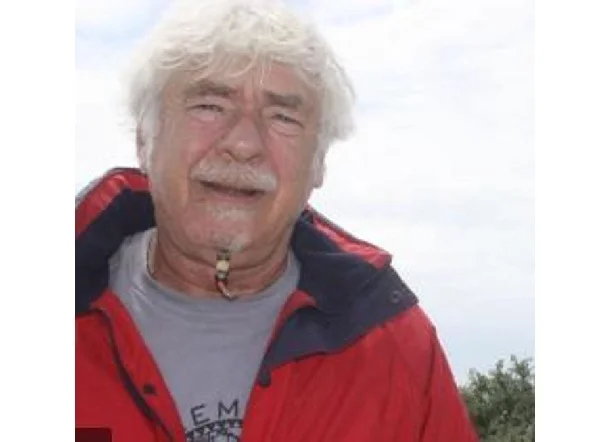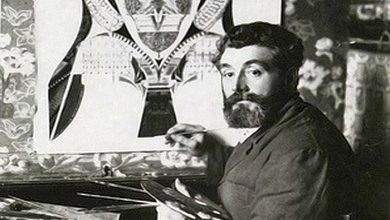The beautiful story of an abandoned lighthouse at the end of the Earth inspired Jules Verne and beckoned explorer

There’s a lonely abandoned lighthouse on a remote island at the very edge of the world, in a place called Tierra del Fuego. It was the lighthouse that inspired Jules Verne to write his novel of the same name. It is the oldest lighthouse in Argentina and the first in southern waters in general. It was designed to prevent the shipwrecks for which these waters were famous. The unusual story of the lonely structure known as San Juan de Salvamento’s Lighthouse.
At the ends of the Earth

In Argentina’s Patagonia, a land that has long beckoned mariners, the San Juan de Salvamento lighthouse is located on Isla de Los Estados. These places are called Tierra del Fuego. A structure of this kind appeared here in 1884. It was not a hospitable place for seafarers. Many shipwrecks have occurred here.
In the late 19th century, Commodore Augusto Lasserre sailed to these places with an expedition. They arrived at the southern shores of the Atlantic. The sea voyage was successful. The Commodore decided that a lighthouse should be built to avoid future disasters for which these waters were famous. In addition to the lighthouse, a prison, a subprefecture, and a rescue station were built.
The lighthouse, built on the rocky promontory of San Juan, was given the eloquent name “de Salvamento” by Lasserre, which meant salvation. It was the first structure of its kind in southern waters. The lighthouse is considered the oldest in Argentina.
At one time, the famous French writer Jules Verne was so inspired by this lighthouse that he wrote an entire novel. His tumultuous events unfolded on this isolated piece of land. The harsh conditions and extreme circumstances did not break the characters. Alluring explorers and adventurers of the land that promises unprecedented adventures. Their beauty is breathtaking, and the novel is like a hymn to survival.
“Salvation” Doesn’t Save?
At first, the lighthouse was nothing remarkable. It was a wooden structure made of beech wood. It had 16 sides, was about five meters high, and had a diameter of nearly ten meters. The lighthouse had two windows that housed eight paraffin lamps. The windows were equipped with Fresnel lenses. This ensured the flow of light.
Unfortunately, the location of the lighthouse was not very good. The light beam did not have such excellent visibility that it could fully ensure the safety of the ships. Despite the considerable height of about six dozen meters
The Argentine government decided in 1901 to install a lighthouse slightly to the north, on Observatory Island. It was said and done: in 1902, the New Year’s lighthouse was opened. The old one was abandoned. Not many years had passed since it was commissioned. But that didn’t stop the Faro de San Juan de Salvamento from becoming world-famous.
Jules Verne was so impressed by the remoteness of the lighthouse, its isolation, that under this impression, he wrote a novel. The events of the book unfolded on this rocky piece of land.
The title of the work was The Lighthouse at the End of the World. The first edition of this riveting story was not published until four years after his death.
Second life

The lighthouse remained abandoned and lay in ruins for nearly a century. Until in 1994, a French navigator, André Bronner, made a trip here. He was so fascinated by the novel by Jules Verne that he decided to find the same lighthouse to see it for himself. The lighthouse at the end of the world did not disappoint the explorer. André stayed there for three whole months.
After that, Bronner was determined to do whatever it took to rebuild the lighthouse. To this end, he first built a replica in the port of La Rochelle in his native France. Then the patron obtained permission from the local authorities of Tierra del Fuego and Ushuaia. André managed to get the support of several private companies and the French and Argentine governments, and he and a team of enthusiasts set to work. A replica of the lighthouse was dismantled and delivered to the site.

It was fully completed in 1998. In the same year, the lighthouse was lit for the first time. In 2000 André Bronner contributed to the construction of another replica of the original San Juan de Salvamento lighthouse off the coast of La Rochelle on the Atlantic coast of France. This lighthouse is built on wooden poles in the sea. It is also called the lighthouse at the end of the earth.




